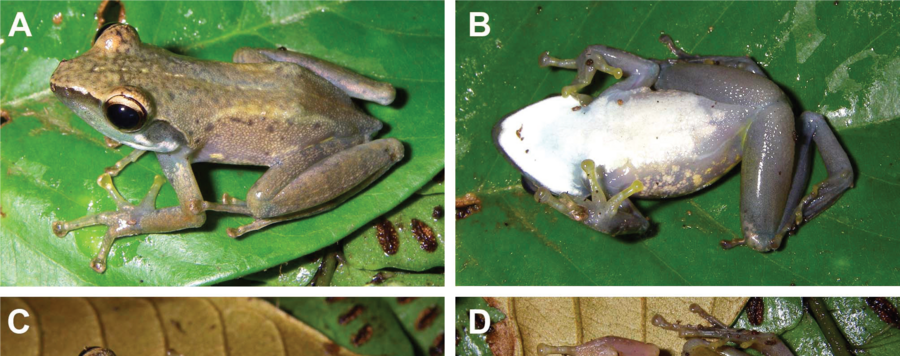
An initial molecular resolution of the mantellid frogs of the Guibemantis liber complex reveals three new species from northern Madagascar
The small arboreal frog Guibemantis liber (Anura: Mantellidae) has served as an example for the existence of deep conspecific lineages that differ by a substantial amount in mitochondrial DNA but are similar in morphology and bioacoustics and thus are assigned to the same nominal species. During fieldwork in northern Madagascar, we identified additional such lineages and surprisingly,
observed close syntopy of two of these at various sites. In-depth study based on DNA sequences of the mitochondrial cytochrome b gene from 338 specimens of G. liber sensu lato from across its range, sequences of four nuclear-encoded markers for 154‒257 of these specimens, a phylogenomic dataset obtained by the FrogCap target capture approach, and additional mitochondrial genes
for representatives of most mitochondrial lineages, as well as bioacoustic and morphological comparisons, revealed concordant differentiation among several lineages of the G. liber complex. We identify nine lineages differing by 5.3‒15.5% in cytochrome b and 2.4‒10.1% in the 16S rRNA gene, and find that several of these lack or have only limited allele sharing in the nuclear-encoded genes. Based on sympatric or parapatric occurrence without genetic admixture, combined with differences in bioacoustic and morphological characters, we scientifically name three lineages from northern Madagascar as new species: G. razoky sp. nov., G. razandry sp. nov., and G. fotsitenda sp. nov. Of these new species, G. razoky sp. nov. and G. razandry sp. nov. show widespread syntopy across northern Madagascar and differ in body size and advertisement calls. Guibemantis fotsitenda sp. nov. is sister to G. razandry sp. nov., but appears to occur at lower elevations, including in close geographic proximity on the Marojejy Massif. We also detected subtle differences in advertisement calls among various other mitochondrial lineages distributed in the Northern Central East and Southern Central East of Madagascar, but the status and nomenclatural identity of these lineages require further morphological and bioacoustic study of reliably genotyped individuals, and assignment of the three available names in the complex: Rhacophorus liber Peracca, 1893, Gephyromantis albogularis Guibé, 1947, and Gephyromantis variabilis Millot and Guibé, 1951. We discuss the identity and type material of these three nomina, designate a lectotype for Gephyromantis variabilis from Itremo, and flag the collection of new material from their type localities, Andrangoloaka and Itremo, as paramount for a comprehensive revision of the G. liber complex.






